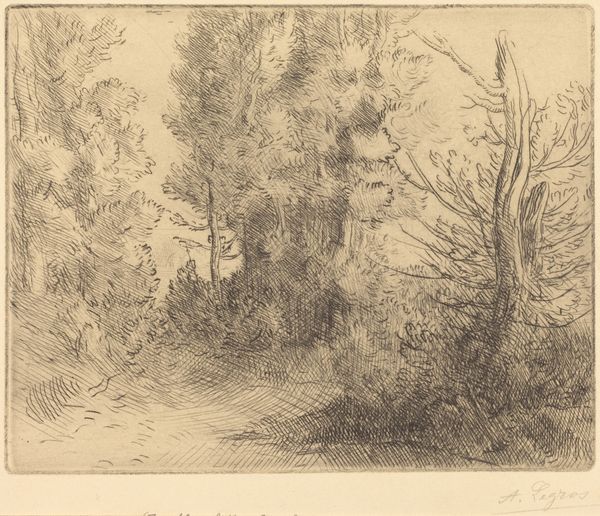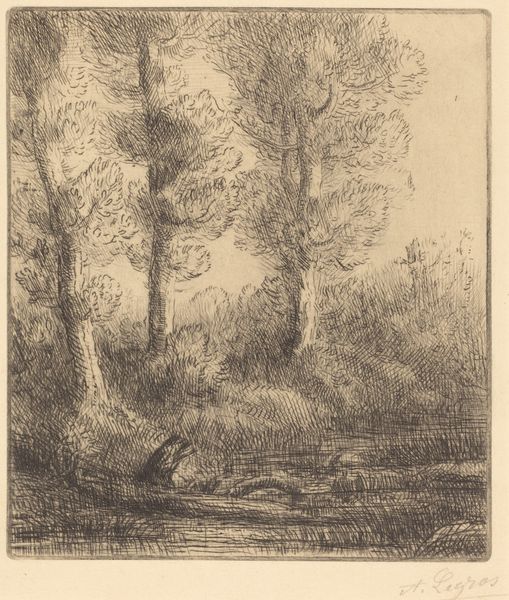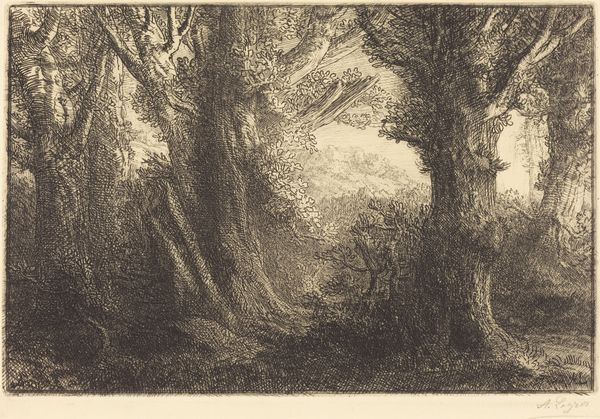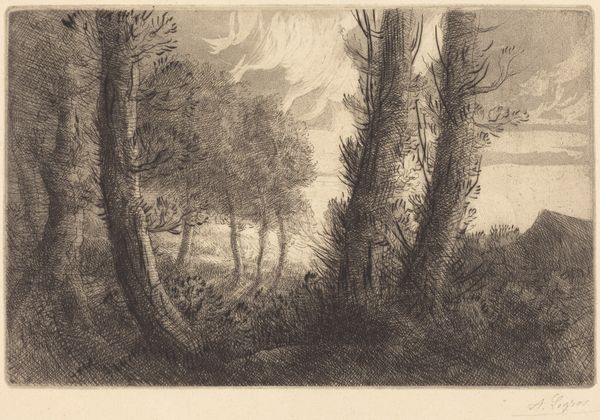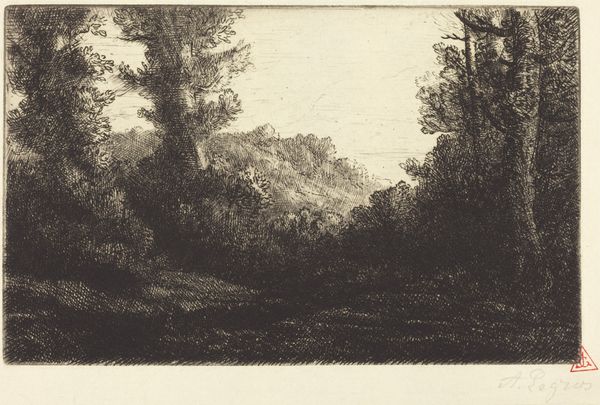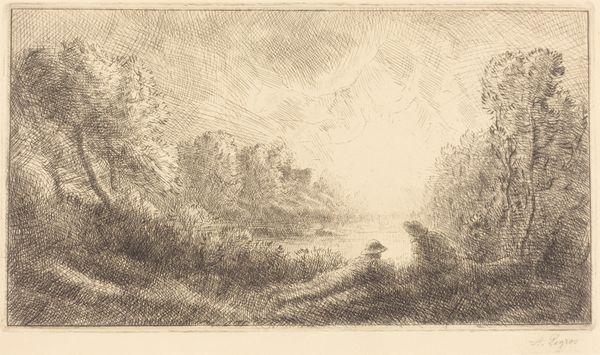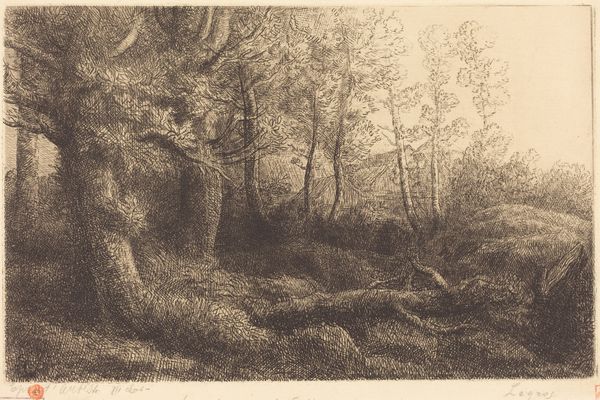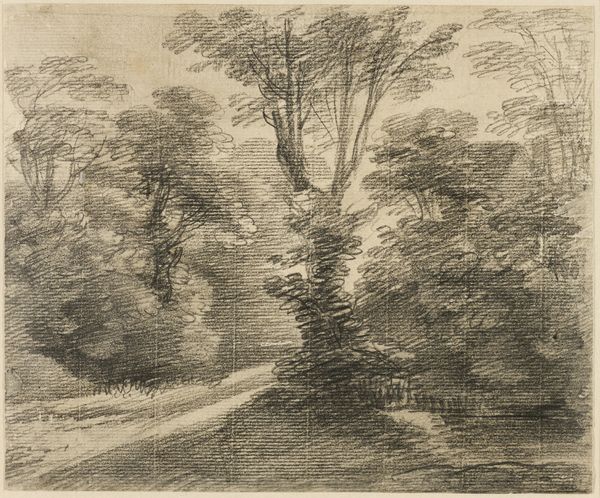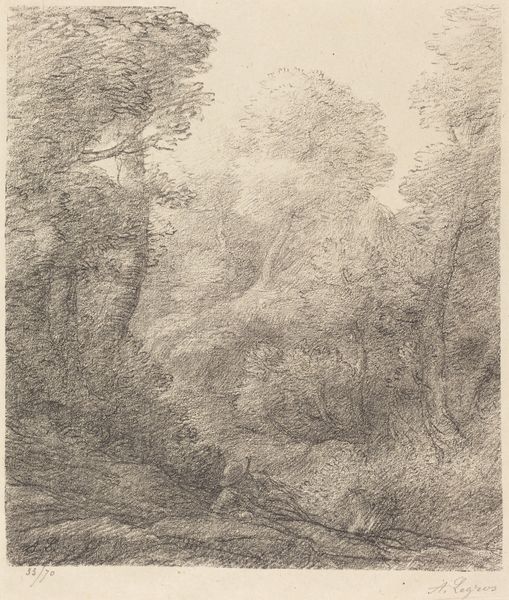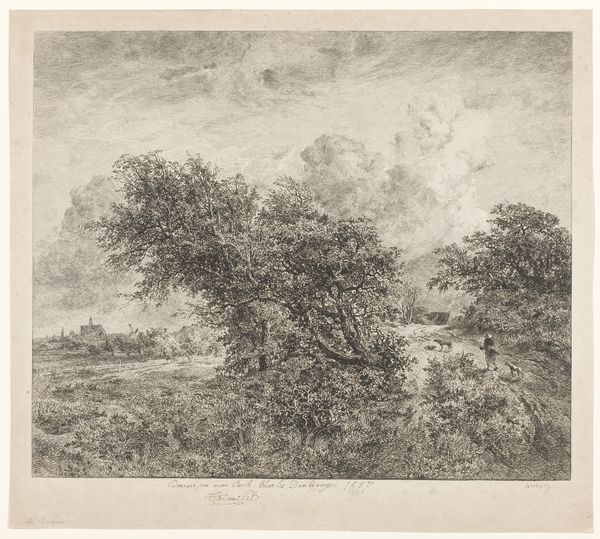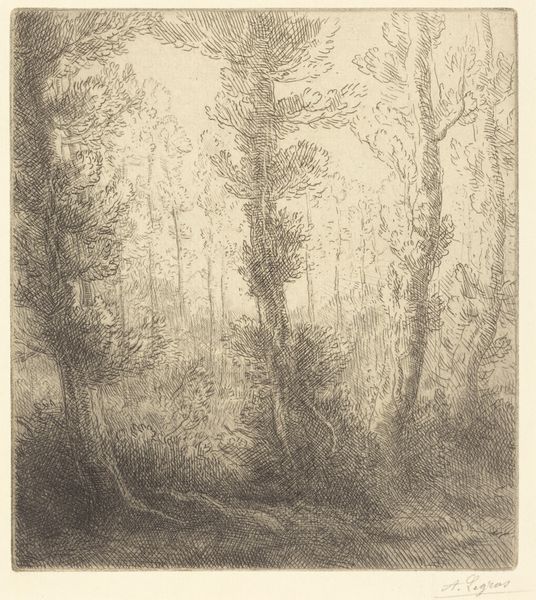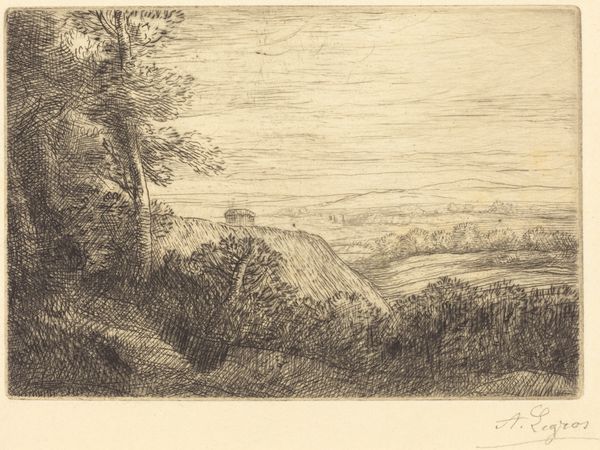
print, etching
# print
#
etching
#
landscape
#
realism
Copyright: National Gallery of Art: CC0 1.0
Editor: This is Alphonse Legros' "Landscape: Near Chailleux", done with etching. It’s hard to pinpoint the exact date. The dense foliage and contrasting light create an almost mystical feeling. What's your interpretation of this landscape? Curator: As a materialist, I'm drawn to the etching process itself. The lines, the physical act of incising the plate, the labour. Think about the societal context: Was Legros critiquing or glorifying rural labor with his focus on the physical landscape? Editor: That’s interesting; I hadn’t considered the labor aspect. So, by looking at the medium, we can understand social commentary? Curator: Absolutely. Etching, a process involving acid, metal, and considerable skill, democratized printmaking. Was it making landscapes more accessible or contributing to the commodification of nature? The material bears witness. Notice the variations in line weight; how does that affect our perception of depth and texture, and, consequently, of the value placed on representing the land? Editor: The line weight really does give texture to the leaves and branches, makes it feel tangible. Curator: Exactly. Consider the consumption of landscapes in 19th century Europe. Were these images intended for an urban audience nostalgic for an idealized rural life? The mass production capabilities of etching would enable that consumption. Editor: I never thought about art quite that way – as being connected to labor and economics. Curator: Art is rarely created in a vacuum. Looking at materials and production methods gives us a potent lens through which to view not just the aesthetics, but the entire socio-economic landscape of the artwork. Editor: This definitely opens up new avenues of interpretation for me. Thank you!
Comments
No comments
Be the first to comment and join the conversation on the ultimate creative platform.
